When the check engine light blinks, it indicates a serious problem in your vehicle’s engine. Ignoring it could lead to further damage and costly repairs.
The check engine light is a vital warning system in every vehicle. When it illuminates, it demands immediate attention. But what does it mean when the check engine light blinks? Unlike a steady light, a blinking check engine light signifies a more severe issue that requires immediate action.
This warning indicates that your vehicle’s engine is experiencing a critical problem that could potentially lead to further damage or expensive repairs if ignored.
It is crucial to address the problem promptly by consulting a trusted mechanic or diagnostic tool to identify and resolve the underlying issue causing the blinking check engine light. Ignoring it may put your vehicle’s performance, safety, and wallet at risk.
Understanding The Check Engine Light
The check engine light is one of the most dreaded lights that can illuminate on your car’s dashboard. It serves as a warning sign that there may be an issue with your vehicle. Understanding the check engine light and the implications it carries can save you time, money, and potential headaches down the road.
The Purpose Of The Check Engine Light
The check engine light (CEL), also known as the malfunction indicator lamp (MIL), is designed to alert drivers to potential problems within their vehicle’s engine or emissions system. When the check engine light turns on, it means the car’s onboard diagnostic system (OBD-II) has detected an issue that needs attention.
Common Causes For The Check Engine Light To Illuminate
There are numerous reasons why the check engine light might come on. Some of the most common causes include:
- Problems with the oxygen sensors
- A faulty catalytic converter
- Issues with the spark plugs or ignition coils
- A loose or damaged gas cap
- Faulty mass airflow sensor (MAF)
Different Types Of Check Engine Light Indicators
Depending on your vehicle, the check engine light may glow steadily or flash. The flashing light typically indicates a more severe problem that requires immediate attention. Ignoring a flashing check engine light can result in further damage to your vehicle and potential safety hazards.
It’s important to note that not all check engine codes are the same. The OBD-II system assigns diagnostic trouble codes (DTCs) to specific issues, which can be read using a code reader or scanner. These codes help mechanics and technicians identify the exact problem and initiate the necessary repairs.
What Does It Mean When The Check Engine Light Blinks
When the check engine light in your car starts blinking, it’s a clear indication that something is seriously wrong. Unlike a steady check engine light, which typically signifies a minor issue that needs attention, a blinking check engine light is a sign of a severe problem that requires immediate action.
A blinking check engine light indicates a misfire in the engine, which can lead to potential damage to the catalytic converter. Ignoring this warning can result in more expensive repairs down the line, as well as putting your safety at risk.
There are several possible reasons why your check engine light might start blinking. Some of the common causes include:
- Faulty ignition system components
- Malfunctioning oxygen sensor
- Clogged fuel injectors
- Issues with the exhaust gas recirculation (EGR) valve
- Problems with the spark plugs or ignition coils
These are just a few examples, and the actual cause can vary depending on the make and model of your vehicle. To accurately diagnose the issue, it is best to consult with a professional mechanic or technician.
Ignoring a blinking check engine light can have serious consequences for both your car’s performance and your wallet. Some of the potential consequences of overlooking this warning include:
- Decreased fuel efficiency: Ignoring a blinking check engine light can result in reduced fuel efficiency, meaning you’ll be spending more money on gas.
- Engine damage: A blinking check engine light often indicates a misfire, which can lead to severe engine damage if left untreated. This can result in costly repairs or even the need for a new engine altogether.
- Increased emission levels: A misfiring engine can cause increased emission levels, polluting the environment and potentially leading to failed emissions tests.
- Safety risks: Ignoring a blinking check engine light means you may be driving with a problem that could cause a breakdown or a loss of control while on the road, putting your safety and the safety of others at risk.
Given the potential consequences, it is crucial to address a blinking check engine light as soon as possible. Taking immediate action can help prevent further damage and save you from costly repairs in the long run.
Immediate Actions To Take When The Check Engine Light Blinks
When the check engine light suddenly starts blinking on your dashboard, it can be a cause for concern. Ignoring or neglecting this warning sign could potentially lead to further damage to your vehicle. Therefore, taking immediate action is crucial to ensure your safety on the road. In this article, we will discuss the necessary steps to follow when your check engine light starts blinking.
Pull Over And Assess The Situation
The first step you should take when the check engine light begins blinking is to pull over safely to the side of the road. This gives you the opportunity to assess the situation and avoid any potential risks or accidents. Switch off the engine and make sure everyone in the vehicle is safe.
Check For Recently Repaired Or Modified Components
If you recently had any repairs or modifications done to your vehicle, it’s essential to check those components first. Improper installation, loose connections, or faulty parts could trigger the check engine light to blink. Inspect the areas where work has been done, and if you notice any issues, contact the mechanic or technician who performed the previous repairs.
Verify The Gas Cap Is Properly Tightened
In some cases, a blinking check engine light could simply be due to a loose or improperly tightened gas cap. The gas cap helps maintain the pressure in the fuel tank, and if it is not tightly sealed, it can cause the check engine light to illuminate.
Check the gas cap and ensure it is securely tightened. If the cap is damaged or missing, replace it with a new one that is compatible with your vehicle.
By taking these immediate actions when the check engine light starts blinking, you can potentially address minor issues before they escalate into larger and more costly problems. It’s important to remember that while the blinking check engine light may indicate a less severe issue, it should still be treated with seriousness and addressed promptly. If you are unable to identify or resolve the problem on your own, it is always best to consult with a qualified mechanic or technician for a proper diagnosis and repair.
Safe Troubleshooting Steps
When the check engine light in your vehicle starts blinking, it’s essential to address the issue promptly to avoid further damage. To help you troubleshoot the problem safely, we have outlined a few steps below:
Inspect For Loose Connections Or Damaged Wires
Loose connections or damaged wires can often trigger the check engine light. To ensure a secure electrical connection:
- Visually examine the wires connected to the engine components.
- Check for any loose or disconnected wires.
- If you notice any damaged or frayed wires, they should be repaired or replaced.
Check The Condition Of The Spark Plugs
The spark plugs play a crucial role in the combustion process within your vehicle’s engine. To assess their condition:
- Locate the spark plugs, usually found near the engine block.
- Inspect them for signs of wear, such as fouling or corrosion on the electrodes.
- If necessary, remove and clean the spark plugs. Consider replacing them if they appear damaged or worn out.
Examine The Oxygen Sensor For Faults
The oxygen sensor monitors the oxygen levels in the exhaust gases, assisting in maintaining optimal fuel efficiency. If the oxygen sensor is faulty, the check engine light may blink. To diagnose potential issues:
| Steps | Actions |
| Step 1 | Locate the oxygen sensor, typically near the exhaust manifold. |
| Step 2 | Inspect the sensor for any physical damage or signs of corrosion. |
| Step 3 | If needed, use a diagnostic tool to retrieve error codes generated by the oxygen sensor. |
| Step 4 | Based on the error codes, determine whether the sensor requires cleaning or replacement. |
By following these safe troubleshooting steps, you can effectively address the potential causes behind a blinking check engine light. However, it’s important to note that certain issues may require professional assistance. Consulting with a certified mechanic is suggested if you are uncertain or unable to resolve the problem on your own.
Common Diy Fixes For A Blinking Check Engine Light
If you are driving along and suddenly the dreaded check engine light starts blinking, it can be quite alarming. The blinking check engine light is an indication of a serious problem with your vehicle’s engine that requires immediate attention. Ignoring this warning sign could lead to further damage and costly repairs.
In some cases, the vehicle may even need to be towed to a mechanic. However, before you panic, there are a few common DIY fixes that you can attempt to resolve the issue yourself.
Disconnect And Reconnect The Battery
One of the simplest fixes you can try when encountering a blinking check engine light is to disconnect and reconnect the battery. This can sometimes reset the engine control unit (ECU), allowing it to recalibrate and potentially resolve any minor issues. Here’s how you can do it:
- Turn off the engine and open the hood of your vehicle.
- Locate the battery and use a wrench to loosen the nut on the negative (-) terminal.
- Remove the negative cable from the battery and wait for about 15 minutes.
- After 15 minutes, reconnect the negative cable to the battery terminal and tighten the nut securely.
- Start the engine and check if the check engine light is still blinking. If it’s off, you may have successfully reset the ECU.
Clean Or Replace The Mass Airflow Sensor
The mass airflow sensor (MAF) measures the amount of air entering the engine and ensures the correct air-fuel mixture for combustion. A dirty or faulty MAF sensor can cause the check engine light to blink. To clean or replace the MAF sensor, follow these steps:
- Locate the mass airflow sensor in your vehicle. It is usually located between the air filter and the engine.
- Disconnect the electrical connectors attached to the sensor.
- Using a specialized MAF cleaner or electrical parts cleaner, carefully clean the sensor. Avoid touching the sensor wires.
- If cleaning does not resolve the issue, the MAF sensor may need to be replaced. Consult your vehicle’s manual or a professional mechanic for guidance on the replacement process.
Replace The Ignition Coil Or Spark Plugs
A faulty ignition coil or worn-out spark plugs can lead to misfires in the engine, triggering the check engine light to blink. To address this issue, you can attempt to replace the ignition coil and spark plugs following these steps:
- Identify the ignition coil(s) and spark plug wires in your engine compartment. Refer to your vehicle’s manual to locate them if necessary.
- One by one, carefully disconnect the spark plug wire from the ignition coil.
- Using a spark plug socket and ratchet, remove the old spark plug from the corresponding cylinder.
- Inspect the ignition coil for any signs of damage or wear. If necessary, replace the faulty ignition coil.
- Install the new spark plug by hand, ensuring it is tightened securely.
- Reconnect the spark plug wire to the ignition coil, making sure it snaps into place.
- Repeat the above steps for each ignition coil and spark plug.
Remember, these DIY fixes are intended for minor issues that can be resolved without professional assistance. However, if the blinking check engine light persists even after attempting these fixes, or if you are unsure about performing them yourself, it is best to consult a qualified mechanic.
They will have the necessary expertise and diagnostic tools to pinpoint and repair the underlying problem.
When To Seek Professional Help
When the check engine light in your vehicle starts blinking, it is important to understand what it means and when it is necessary to seek professional assistance. While a steady check engine light might indicate various issues, a blinking check engine light typically signals a more serious problem that requires immediate attention.
Ignoring this warning can lead to further damage to your vehicle and potentially costly repairs. In this article, we will discuss the indications that professional help is necessary, the benefits of consulting a certified mechanic, and important questions to ask them.
Indications That Professional Assistance Is Necessary
There are several indications that suggest it is time to seek professional help when the check engine light begins blinking:
- Loss of power or engine misfire: If you notice a sudden loss of power or experience an engine misfire, it is a strong indication that the blinking check engine light requires immediate attention. These issues can stem from problems such as faulty spark plugs, a damaged ignition coil, or a malfunctioning fuel injector.
- Increased exhaust smoke: If you see an increase in smoke coming from your vehicle’s exhaust, particularly if it is accompanied by a blinking check engine light, it is crucial to consult a professional. This could be a sign of a serious issue with the engine or emissions system, such as a failed catalytic converter or an engine coolant leak.
- Unusual engine noises: If your engine is making unusual noises, such as knocking, banging, or clicking sounds, this could be a sign of a mechanical problem that requires the expertise of a certified mechanic. Ignoring these noises, especially with a blinking check engine light, may lead to further damage to the engine.
- Difficulty starting or stalling: If your vehicle has trouble starting or frequently stalls, especially in conjunction with a blinking check engine light, it is essential to have a professional diagnose the problem. Issues such as a malfunctioning ignition switch or a failing fuel pump can cause these symptoms, and prompt attention is necessary to prevent further complications.
- Decreased fuel efficiency: If you notice a sudden decrease in your vehicle’s fuel efficiency, it may be related to a problem indicated by the blinking check engine light. The issue could be as minor as a loose gas cap or as major as a malfunctioning oxygen sensor, both of which should be addressed by a professional.
Benefits Of Consulting A Certified Mechanic
When facing a blinking check engine light, consulting a certified mechanic offers numerous benefits:
- Expertise: Certified mechanics possess the expertise and experience to accurately diagnose the problem indicated by the blinking check engine light. They can identify the root cause and provide appropriate solutions, saving you time and money in the long run.
- Access to specialized tools and technology: Certified mechanics have access to advanced diagnostic tools and technology that enable them to quickly and accurately pinpoint the issue. This ensures a more precise diagnosis and more effective repairs.
- Warranty protection: If your vehicle is still under warranty, having a certified mechanic address the problem ensures that the repairs are performed in compliance with the manufacturer’s specifications. This protects your warranty and prevents potential conflicts with the dealership or manufacturer.
- Quality repairs: Certified mechanics adhere to industry standards and guidelines, ensuring that repairs are performed to the highest quality. This gives you peace of mind knowing that the issue is addressed correctly and reduces the risk of recurrent problems.
Important Questions To Ask The Mechanic
When consulting a certified mechanic about your blinking check engine light, it is important to ask the following questions:
- What is the specific problem indicated by the check engine light? Understanding the exact issue will help you make informed decisions regarding repairs and potential costs.
- What repairs are necessary? By knowing the required repairs, you can evaluate their urgency and prioritize your budget accordingly.
- Are there any potential underlying causes that need further investigation? Identifying any underlying causes will help prevent future issues and address the root problem effectively.
- What is the estimated cost of repairs? Having a clear understanding of the costs involved allows you to plan your finances and compare estimates from different mechanics if needed.
- Will the repair impact the vehicle’s performance or fuel efficiency? Knowing the potential impact of the repair can help you assess its value and make an informed decision.
Remember, a blinking check engine light should not be taken lightly. Seeking professional assistance promptly can prevent further damage to your vehicle and ensure its optimal performance. Consult a certified mechanic to accurately diagnose and address the underlying issue, allowing you to drive with confidence once again.
Preventing Future Check Engine Light Issues
Preventing future check engine light issues is crucial to maintain the performance and longevity of your vehicle. Ignoring the blinking check engine light can lead to costly repairs and can even result in breakdowns on the road. By following these simple steps, you can avoid potential problems and keep your engine running smoothly.
Performing Regular Vehicle Maintenance
Maintaining your vehicle regularly is the key to preventing check engine light issues. By following your manufacturer’s recommended maintenance schedule, you can catch any potential problems before they escalate. Regular maintenance includes:
- Changing the engine oil and oil filter at the specified intervals
- Checking and replacing the air filter
- Inspecting and replacing worn-out spark plugs
- Checking the battery and replacing it if necessary
- Inspecting and replacing worn-out belts and hoses
- Checking the tire pressure and tread depth regularly
- Inspecting and replacing worn-out brake pads and rotors
By performing these regular maintenance tasks, you can detect any issues early on and prevent them from causing the check engine light to blink.
Using High-quality Fuel And Engine Oil
The quality of fuel and engine oil you use plays a significant role in the health of your engine. Using low-quality fuel or engine oil can lead to a buildup of deposits and contaminants, which can trigger the check engine light. To prevent this,:
- Always use fuel with the recommended octane rating for your vehicle.
- Fill up at reputable gas stations to ensure the fuel quality.
- Use engine oil that meets the manufacturer’s specifications.
- Change the engine oil at the recommended intervals to keep it clean and free of contaminants.
By using high-quality fuel and engine oil, you can reduce the chances of triggering the check engine light and keep your engine running smoothly.
Addressing Issues Promptly
Addressing any issues promptly is essential to avoid further damage to your vehicle. If the check engine light blinks, it’s crucial to take immediate action. Here’s what you should do:
- Check if the gas cap is loose or damaged and tighten or replace it if necessary. A loose gas cap can cause the check engine light to blink.
- Scan the vehicle for trouble codes using an OBD-II scanner. This will help identify the specific issue causing the light to blink.
- If you are unable to diagnose the problem or if it requires professional attention, take your vehicle to a certified mechanic for inspection and repair.
Ignoring a blinking check engine light can cause further damage to your vehicle and result in expensive repairs. By addressing issues promptly, you can prevent future check engine light problems and keep your vehicle running smoothly.
Frequently Asked Questions Of What Does It Mean When The Check Engine Light Blinks
Can I Drive My Car With The Check Engine Light Blinking?
No, it is not safe to drive your car when the check engine light is blinking. This indicates a serious problem that could potentially cause further damage to your vehicle. Have it checked by a professional mechanic immediately.
What Does It Mean When Your Check Engine Light Flashes Then Goes Off?
The flashing check engine light indicates a serious problem with your vehicle. It means you should immediately address the issue. When the light goes off, it means the problem may have resolved itself temporarily, but it’s still advisable to get your vehicle checked by a professional to prevent any further damage.
Why Is My Check Engine Light Blinking And My Car Jerking?
Your check engine light blinking and car jerking may indicate a serious issue. It could be a misfire in the engine, a faulty sensor, or a problem with the fuel system. Don’t delay – get your vehicle checked by a professional to avoid further damage and costly repairs.
Is It Worse If Your Check Engine Light Is Flashing Or Solid?
A flashing check engine light is worse than a solid one.
Conclusion
The blinking check engine light in your vehicle is not something to be taken lightly. It is a warning sign that signifies a potential issue with your car’s engine. Ignoring it could lead to more severe problems and costly repairs in the long run.
The best course of action is to have your vehicle properly diagnosed by a professional mechanic as soon as possible. Don’t let a blinking check engine light be overlooked – take it as a call to action to ensure the continued health and performance of your car.

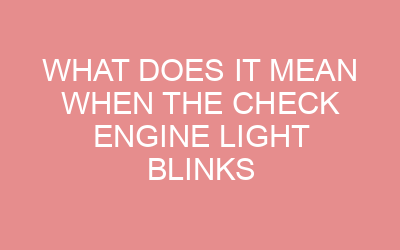
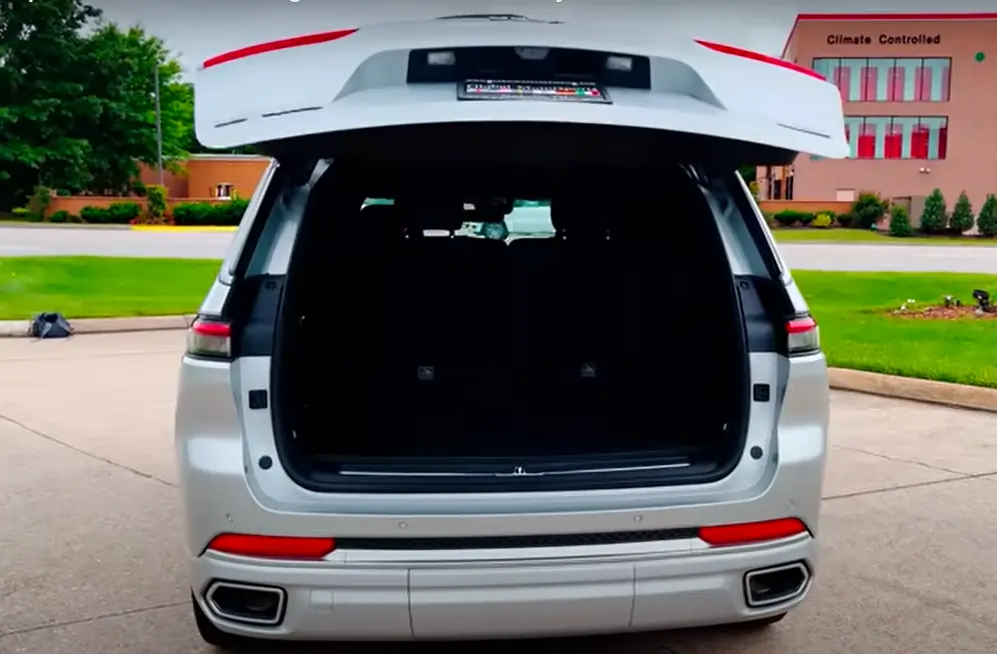





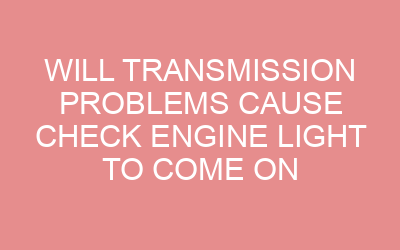
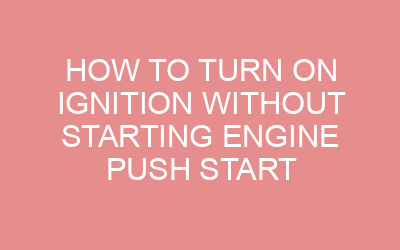


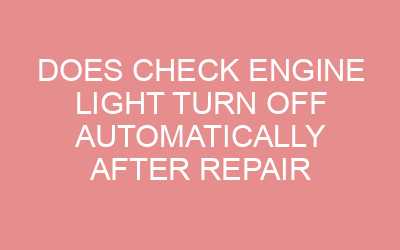
Leave a Reply